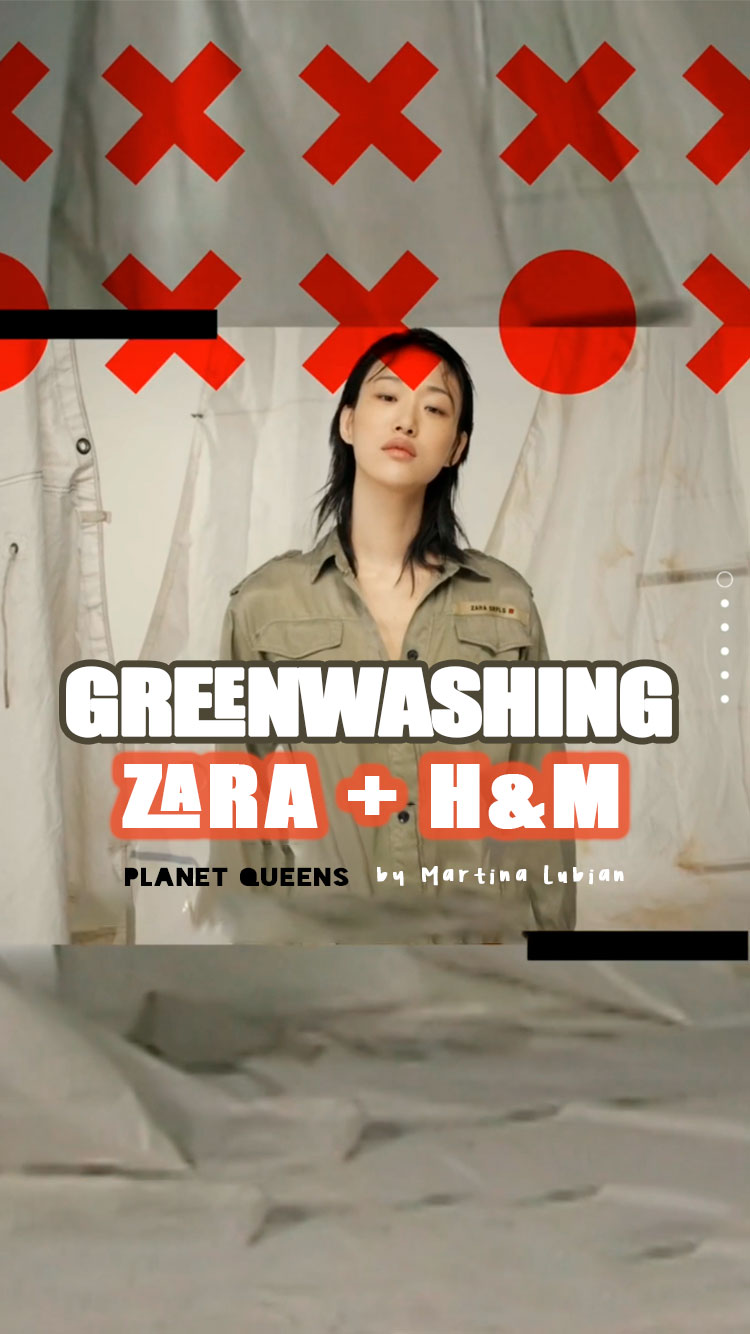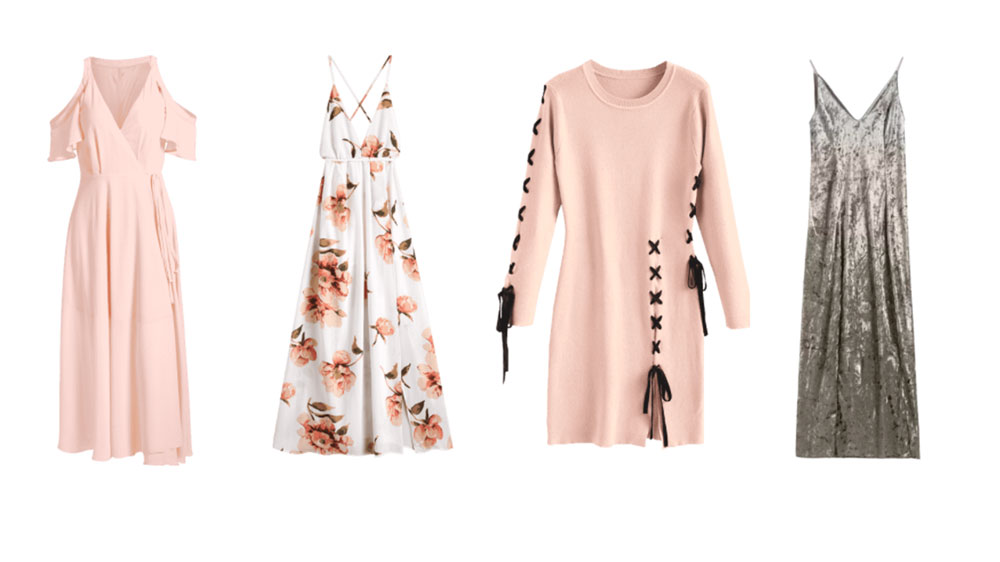En el anterior post os conté qué era el greenwashing y hoy os voy a hablar de 2 ejemplos de marcas conocidas que lo practican: H&M y Zara.
El caso H&M
La colección “conscious” de H&M solo es sostenible porque usan materiales sostenibles, pero siguen usando tóxicos para teñir la ropa y estos tóxicos contaminan el agua y tu piel. De hecho, la tinción de textiles es la segunda mayor causa de contaminación del agua.
Además tienen un programa de reciclaje de ropa por el cual, si llevas la ropa que ya no quieres, te dan un cupón de descuento para gastar en la tienda. Conveniente, ¿no?
Es más, H&M no cuenta con la tecnología para reciclar toda esa ropa.
Reciclar es caro y difícil, ¿crees que se van a parar a hacerlo pudiendo producir una nueva prenda por solo unos céntimos?
De todo el material usado para crear sus alrededor de medio millón de prendas anuales, solo el 0.7% es reciclado. Sin embargo, te hacen creer que todo lo que donas se reutiliza.
Se requerirían 12 años para reciclar las prendas que crea la industria del fast fashion en 48 horas, así que el primer paso, si de verdad quisieran hacer las cosas bien, sería reducir la producción.
Además, la ropa que donas no siempre es transformada en otra, sino que se envía a países más pobres para revenderla, y si no se vende, acaba en vertederos y posteriormente incinerada, contaminando el aire y el suelo.
En 2017 salió a la luz que H&M quemó alrededor de 19 toneladas de ropa de temporadas pasadas.
–
H&M + ZARA- GREENWASHING ALERT!
In the previous post I told you what greenwashing was and today I am going to talk about 2 examples of well-known brands that practice it: H&M and Zara.
The H&M case
H&M’s “conscious” collection is only sustainable because they use sustainable materials, but they continue to use toxic substances to dye clothes and these toxins pollute the water and your damage your skin. In fact, textile dyeing the second biggest cause of water pollution.
They also have a clothing recycling program in stores. This allows you to bring clothes that you no longer want and they give you a discount coupon to spend in the store. Convenient, right?
What’s more, H&M doesn’t have the technology to recycle all those clothes.
Recycling is expensive and difficult, do you think they will do it when they can produce a new garment for only a few cents?
Of all the material used to create their around half a million garments annually, only 0.7% is recycled. However, they make you believe that everything you donate is reused.
It would take 12 years to recycle the garments that the fast fashion industry creates in 48 hours, so the first step, if they really wanted to do things right, would be to reduce production.
Furthermore, the clothes you donate is not always used to create another, but are sent to under developed countries for resale, and if they are not sold, they end up in landfills and later incinerated, polluting the air and soil.
In 2017 it was revealed that H&M burned around 19 tons of clothing from past seasons.
El caso ZARA
Zara planea usar solo materiales orgánicos en sus colecciones para 2025. Esto está fantástico, pero de nuevo, el problema es el volumen de la producción.
Incluso aunque hagan el cambio a producir con todo materiales orgánicos, estos materiales necesitan agua y suelo para crecer.
Si siguen produciendo mucho y muy rápido, acabarán explotando estos recursos naturales, por lo tanto ya no sería una producción sostenible.
En los últimos años ha habido un aumento drástico de residuos textiles por lo que deberíamos centrarnos en reducir las compras y ralentizar la producción en vez de introducir nuevos materiales para generar más consumo.
Solo en esta temporada ya encontramos más de 6300 prendas en la colección de mujer. A esto se le suma que cada semana añaden más ropa a la colección. ¿Es esto lo que entienden por “sostenible”?
Es más, la colección Join Life ni siquiera es sostenible. Para empezar, tiene los mismos precios que la colección normal. ¿Cómo puede ser que esto sea así cuando se supone que los materiales son sostenibles y se producen de forma ética? Fácil, porque es mentira.
Más calidad, menos cantidad
Como conclusión, la idea es producir menos pero de mayor calidad.
Se necesitan reglas que cambien el modelo de producción y para eso necesitamos a las industrias de fast fashion como colaboradoras, ya que estas empresas son las que tienen el dinero para investigar y avanzar en temas de materiales y tecnologías que permitan ahorrar agua y energía en el proceso de producción.
El tema no está en boicotear estas empresas sino trabajar junto a ellas. Por eso os mencioné, en el post sobre el fast fashion, como una de las ideas, mensajear a estas empresas y dejarles saber qué queremos que cambien y cómo.
–
The ZARA case
Zara plans to use only organic materials in its collections by 2025. This sounds great but, again, the problem is the volume of production.
Even if they make the switch to only using organic materials, these materials still need water and soil to grow.
If they continue to produce this much and this fast, they will end up exploiting these natural resources, therefore it would no longer be a sustainable production.
In recent years there has been a drastic increase in textile waste so we should focus on reducing purchases and slowing down production rather than introducing new materials to generate more consumption.
This season alone we already find more than 6,300 garments in the women’s collection. To this is added that each week they add more clothes to the collection. Is this what they mean by «sustainable»?
What’s more, the Join Life collection is not even sustainable. For starters, it has the same prices as the regular collection. How can this be so when the materials are supposed to be sustainable and produced ethically? Easy, because it is a lie.
More quality, less quantity
In conclusion, the idea is to produce less but of higher quality.
We need regulations that change the production model and for that we need fast fashion industries as partners, since these companies are the ones that have the money to research new materials and technologies that save water and energy in the production process.
The issue is not to boycott these companies but to work together for a better future. That is why I mentioned to you, in the post about fast fashion, as one of the ideas, to message these companies and let them know what we want them to change and how.
Fuentes/ Sources
‘H&M accused of ‘greenwashing’ over plans to make clothes from sustainable fabric’ (Independent.co.uk)
What really happens to old clothes dropped in those in-store recycling bins (Cbc.ca)
We need to talk about greenwashing … companies are lying to you (Sarah Hawkinson- Youtube)
#gonegreen2016 | day 120 | h&m’s unconscious collection (hollyrose.eco)




